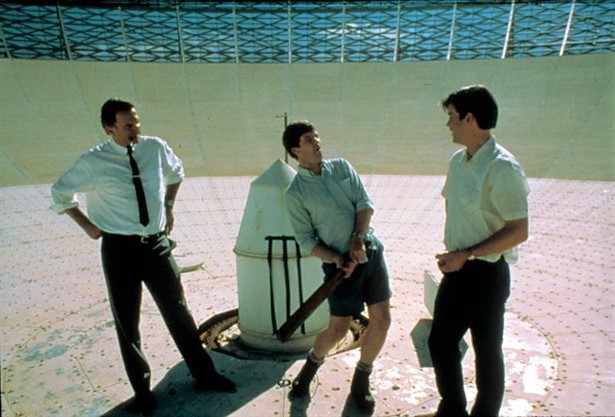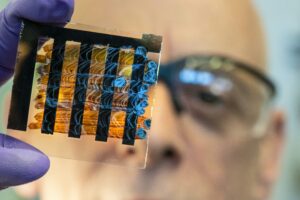
17 October 2025
“You treat us like a pack of galahs. Just because I don’t wear a tie or spend all day buried in a manual doesn’t mean I’m a drongo.” This memorable line from the film The Dish captures the humor and spirit of an Australian classic. Released in 2000 by Rob Sitch and the Working Dog Productions team, the film stars Sam Neill, Tom Long, and Kev Harrington as staff at the Parkes radio telescope in rural New South Wales. The movie dramatizes the role of the telescope, affectionately known as ‘The Dish,’ in supporting the live TV broadcast of the Apollo 11 Moon landing.
The Dish has been cherished by audiences and critics alike, with “David and Margaret” awarding it 4.5 stars. Its blend of fact and fiction has sparked curiosity about what really happened during those historic days in 1969. Let’s delve into the reality behind the film’s narrative.
Fact: The Real Role of the Parkes Telescope
The Parkes radio telescope, also known as Murriyang, played a crucial role in the Apollo 11 mission. It tracked the spacecraft, gathering voice signals, telemetry, and television signals from the moonwalk itself. The telescope’s assistance was vital to NASA’s Honeysuckle Creek and Tidbinbilla facilities near Canberra, as well as the Carnarvon station in Western Australia. On the day of the moon landing, signals from NASA’s Goldstone, USA, tracking station did indeed “disappear into the ground,” making Parkes’ contribution even more significant.
The film accurately depicts the Parkes control room and the operations of the telescope. As former Parkes electrical engineer David Cooke recounts, the observatory faced gusts of up to 100 km/hr on the day of the moonwalk, yet the decision to keep the telescope pointed into the wind proved successful.
Fiction: Creative Liberties for a Compelling Story
While The Dish captures the essence of the Parkes Observatory’s involvement, it takes creative liberties for dramatic effect. One major deviation is the portrayal of the Parkes team as the sole heroes of the Apollo 11 broadcast. In reality, it was a collaborative effort involving multiple Australian facilities. The first televised moments of the Moon landing, including Neil Armstrong’s famous “One giant leap” statement, were received via Honeysuckle Creek, not Parkes.
Another fictional element is the scene where staff play cricket on the Dish. While the actors did film this scene on the actual telescope, it was done with caution, using a tennis ball rather than a cricket ball. Additionally, the film’s depiction of a power failure is purely fictional. The Parkes Observatory had a reliable UPS and backup generator, and Director John Bolton ensured the team was prepared for any contingency.
Exploring the Historical Context
The release of The Dish came at a time when interest in space exploration was resurging. The film’s success is partly due to its nostalgic portrayal of a pivotal moment in history. The Parkes Observatory’s involvement in the Apollo 11 mission is a testament to the international cooperation that characterized the space race era. The film’s humorous take on cultural differences between Australians and Americans highlights the camaraderie and shared goals of the time.
John Bolton, the real-life Director of the Parkes Observatory, was a key figure in this collaboration. His dedication to precision and teamwork ensured the success of the mission, despite the film’s fictionalized portrayal of events.
Looking Forward: The Legacy of ‘The Dish’
Today, the Parkes Observatory continues to be a vital part of Australia’s contribution to space exploration. The legacy of The Dish lives on, inspiring new generations to explore the stars. Visitors to the Parkes Observatory can learn more about its history and see the iconic telescope up close.
The film’s blend of fact and fiction serves as a reminder of the power of storytelling in preserving history. As we look to the future of space exploration, the story of the Parkes Observatory and its role in the Apollo 11 mission remains a source of national pride and inspiration.
For those interested in learning more, the book “Parkes: 30 Years of Radio Astronomy” offers an in-depth look at the observatory’s history and achievements, available at the Parkes Observatory Visitors Centre.





